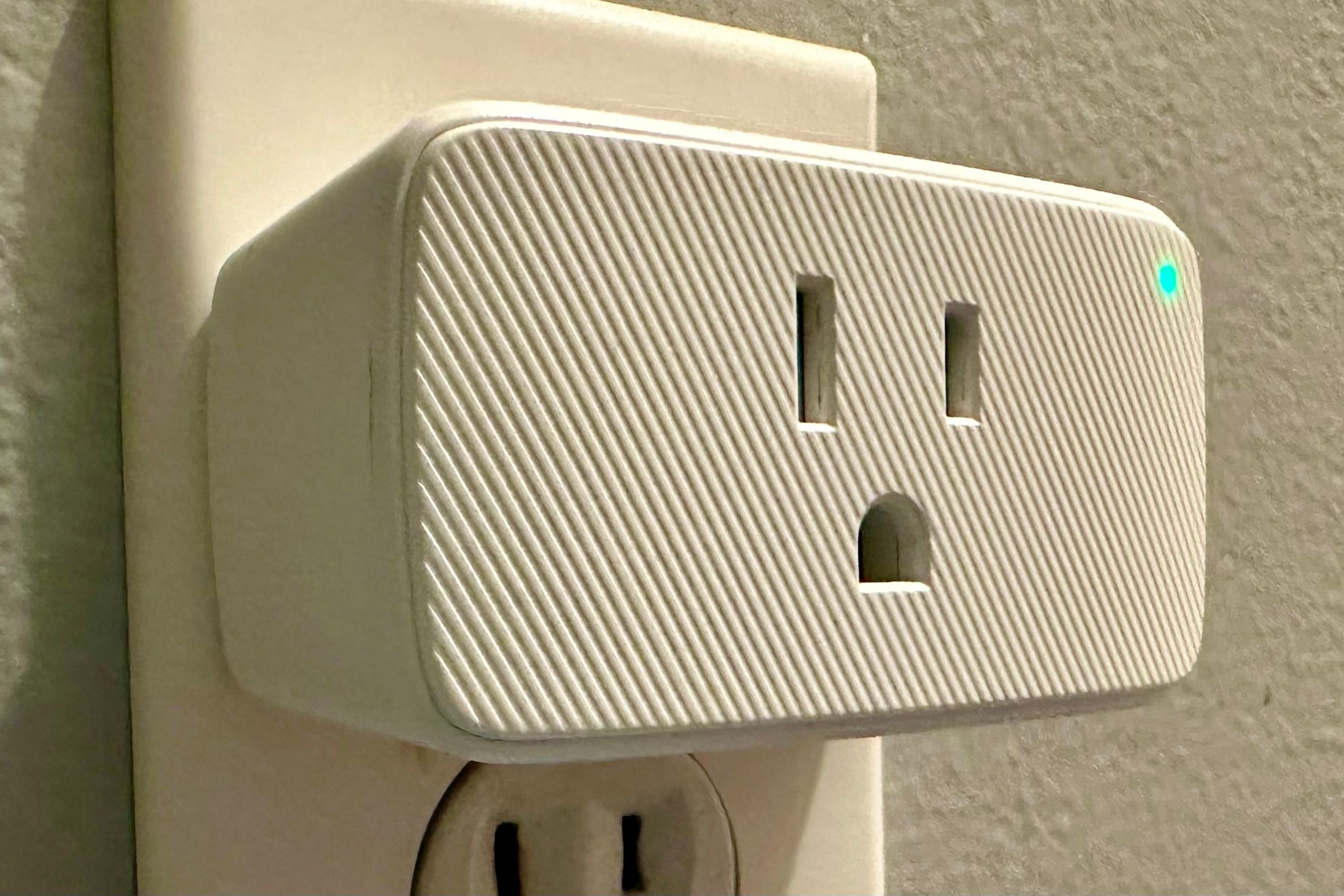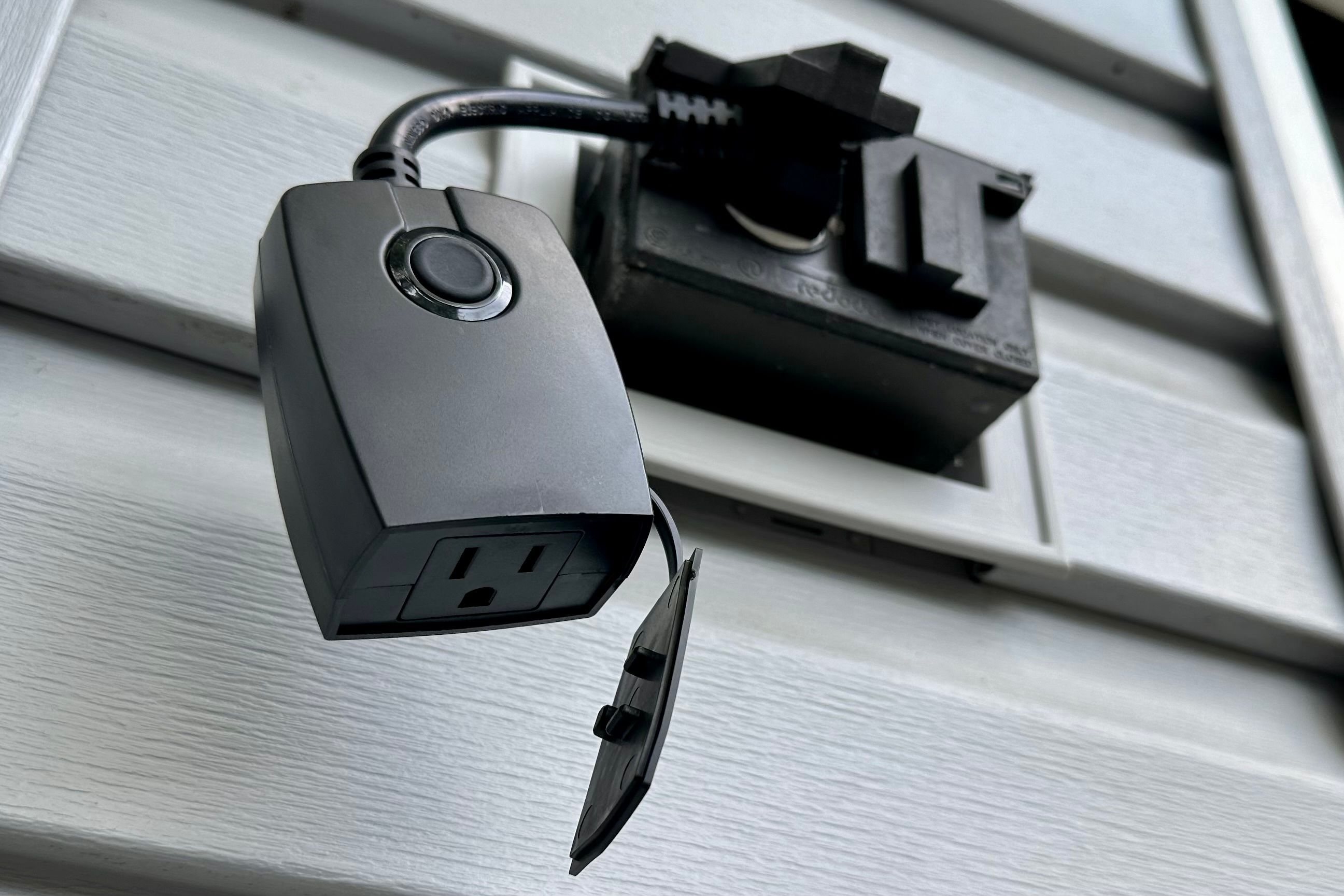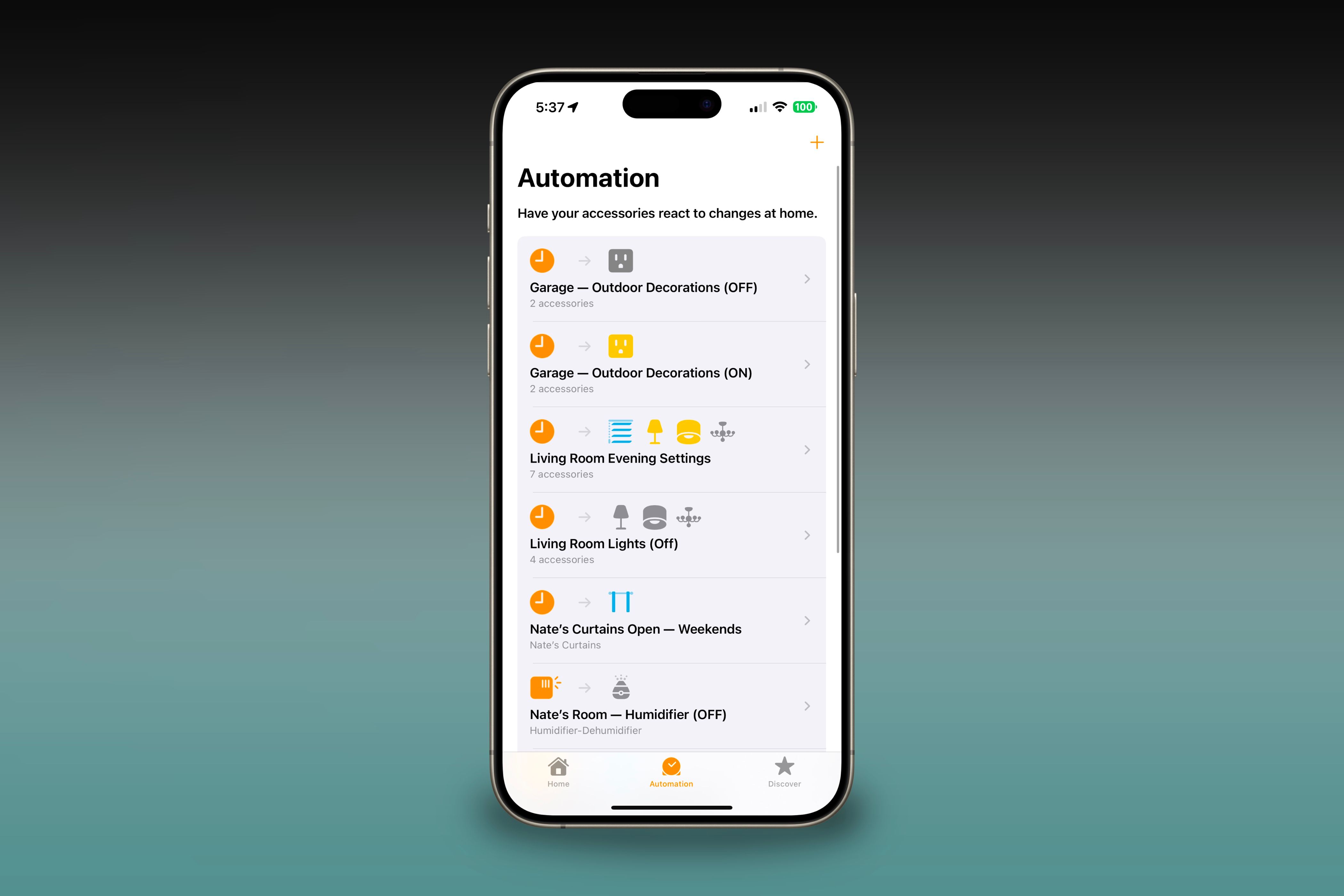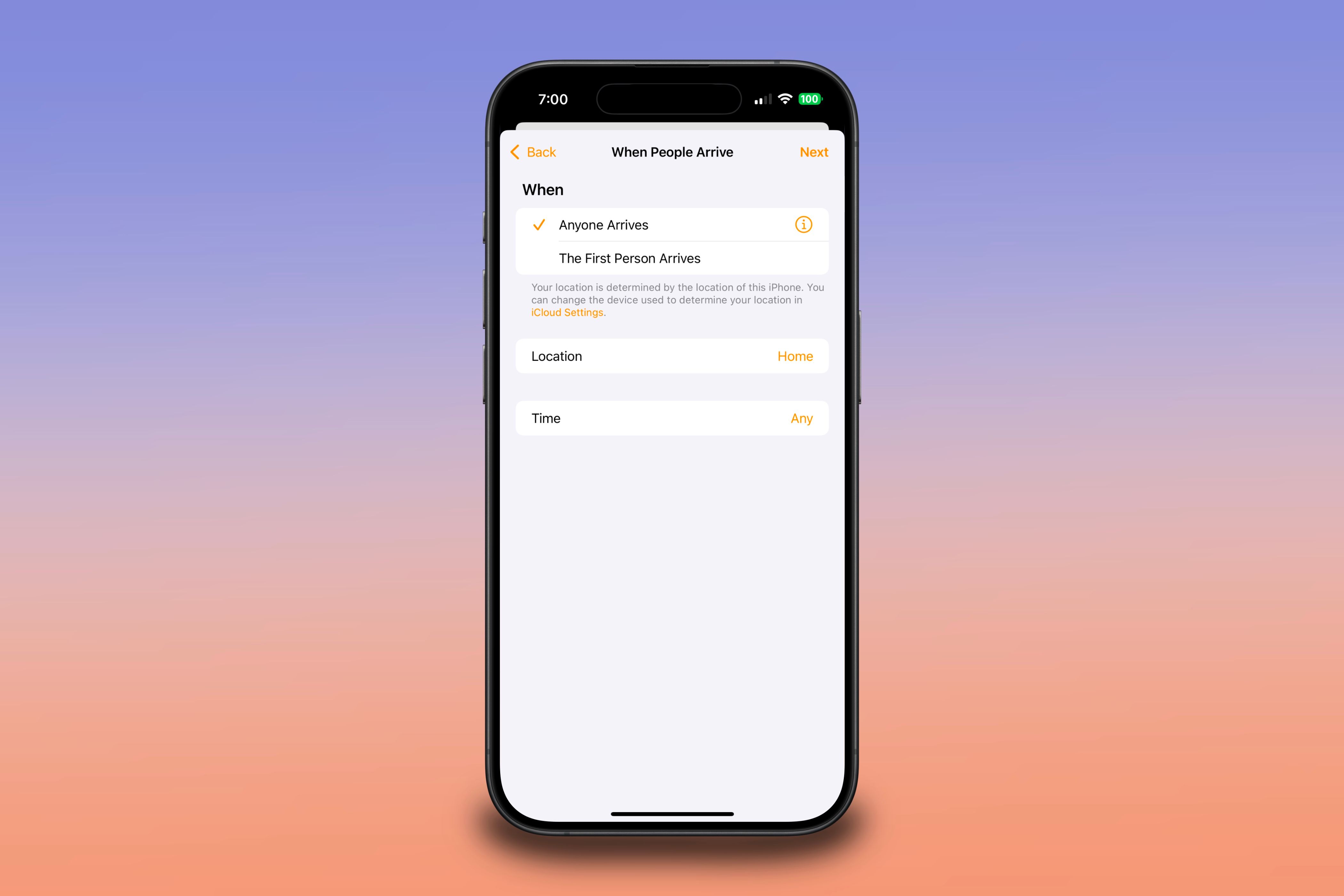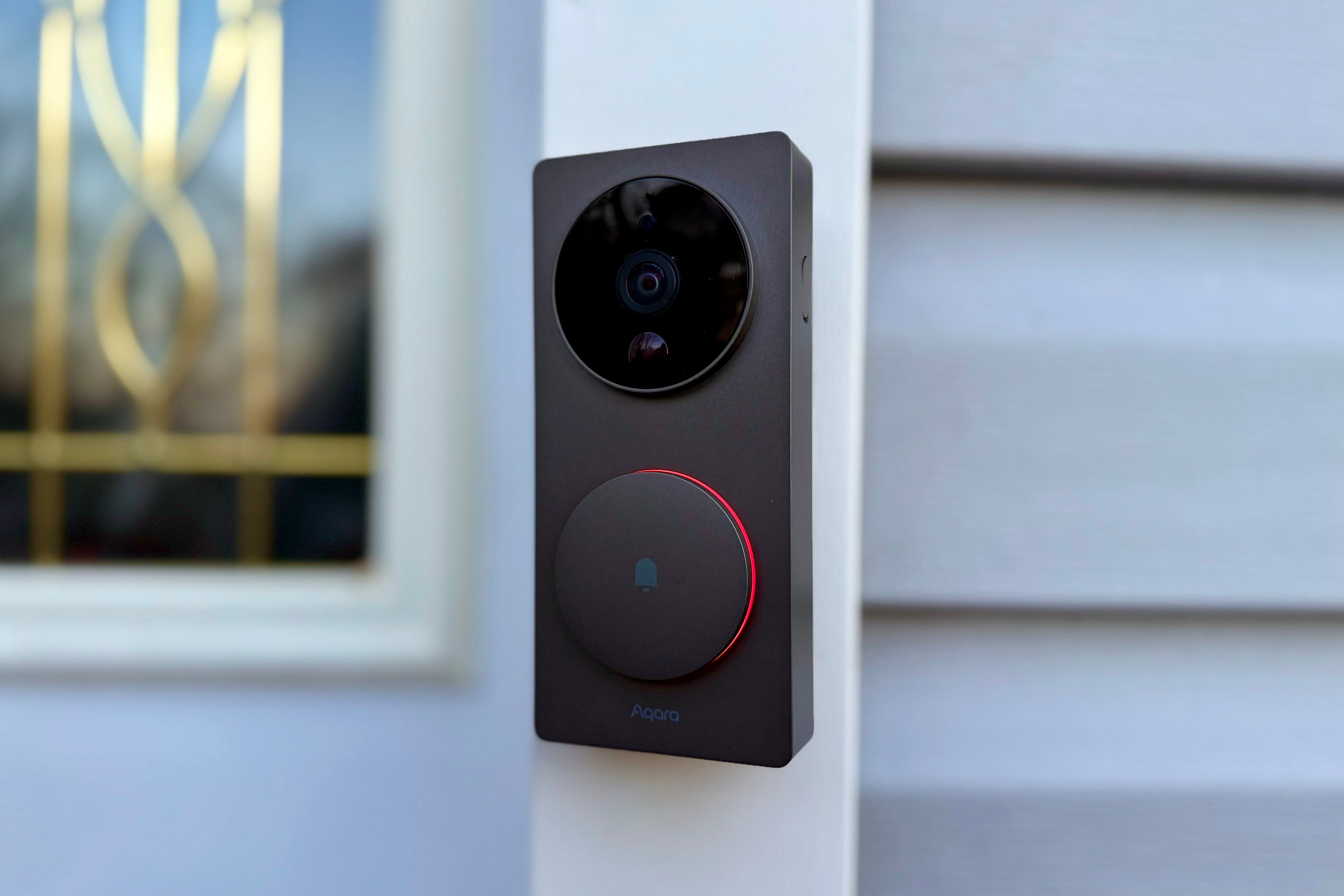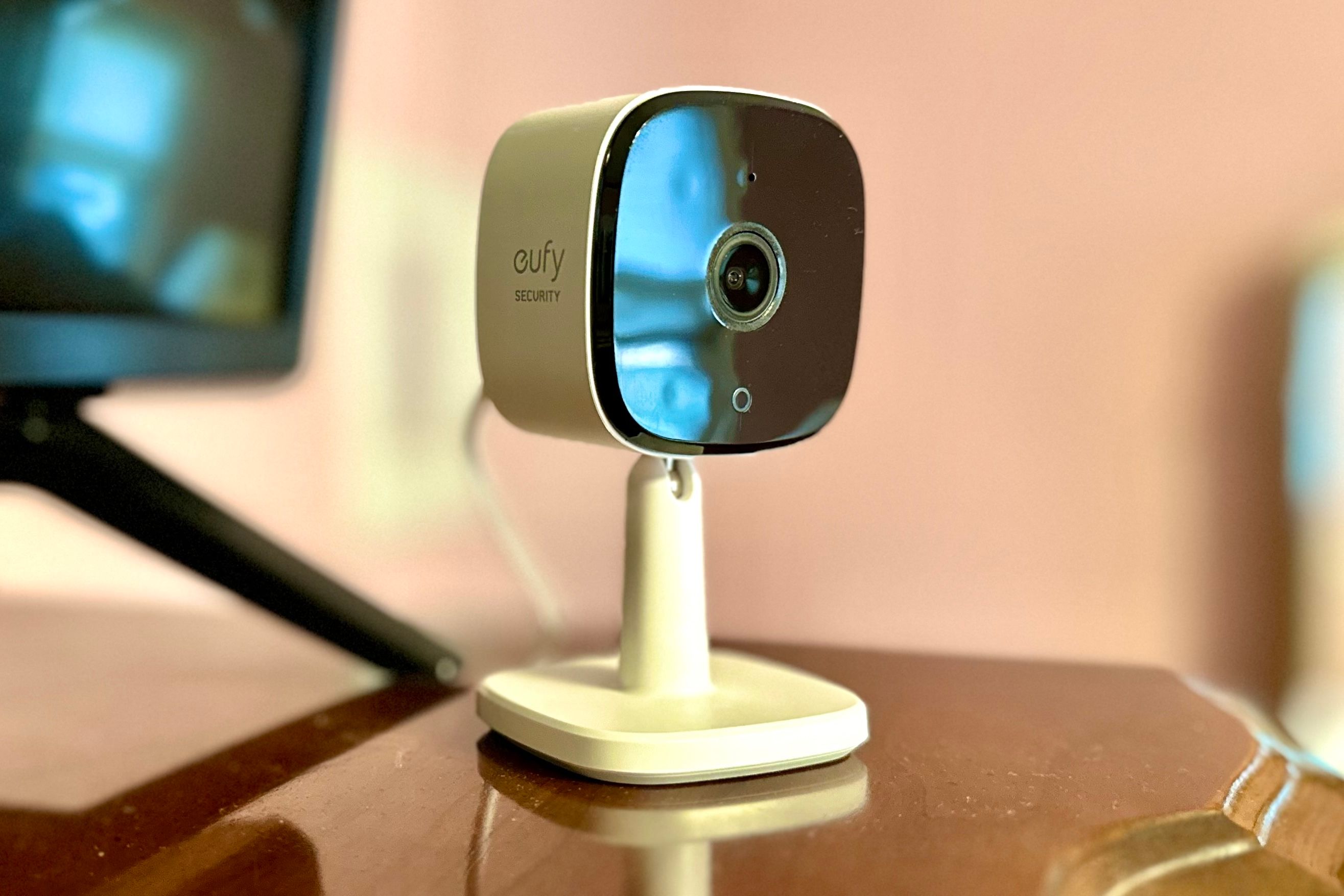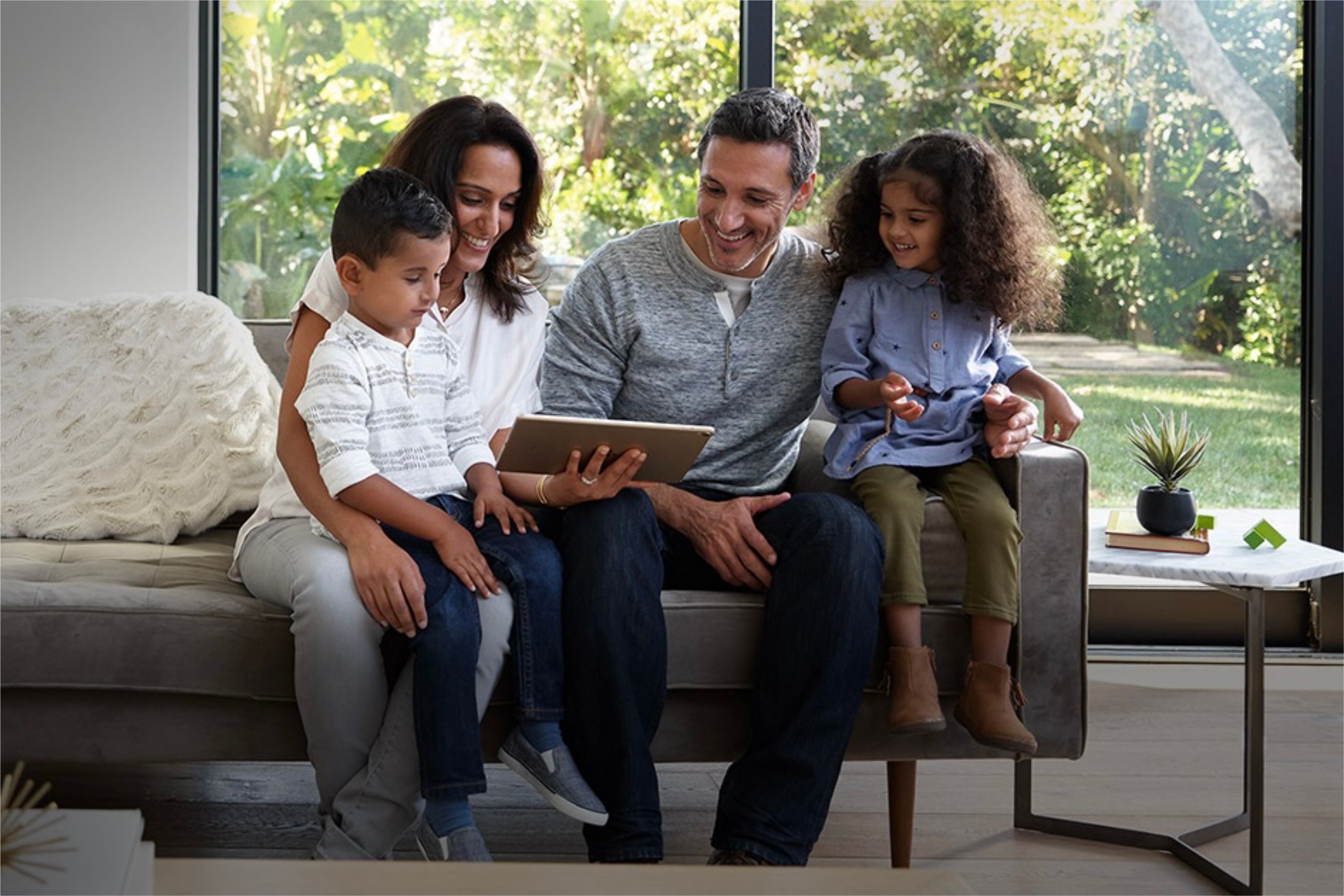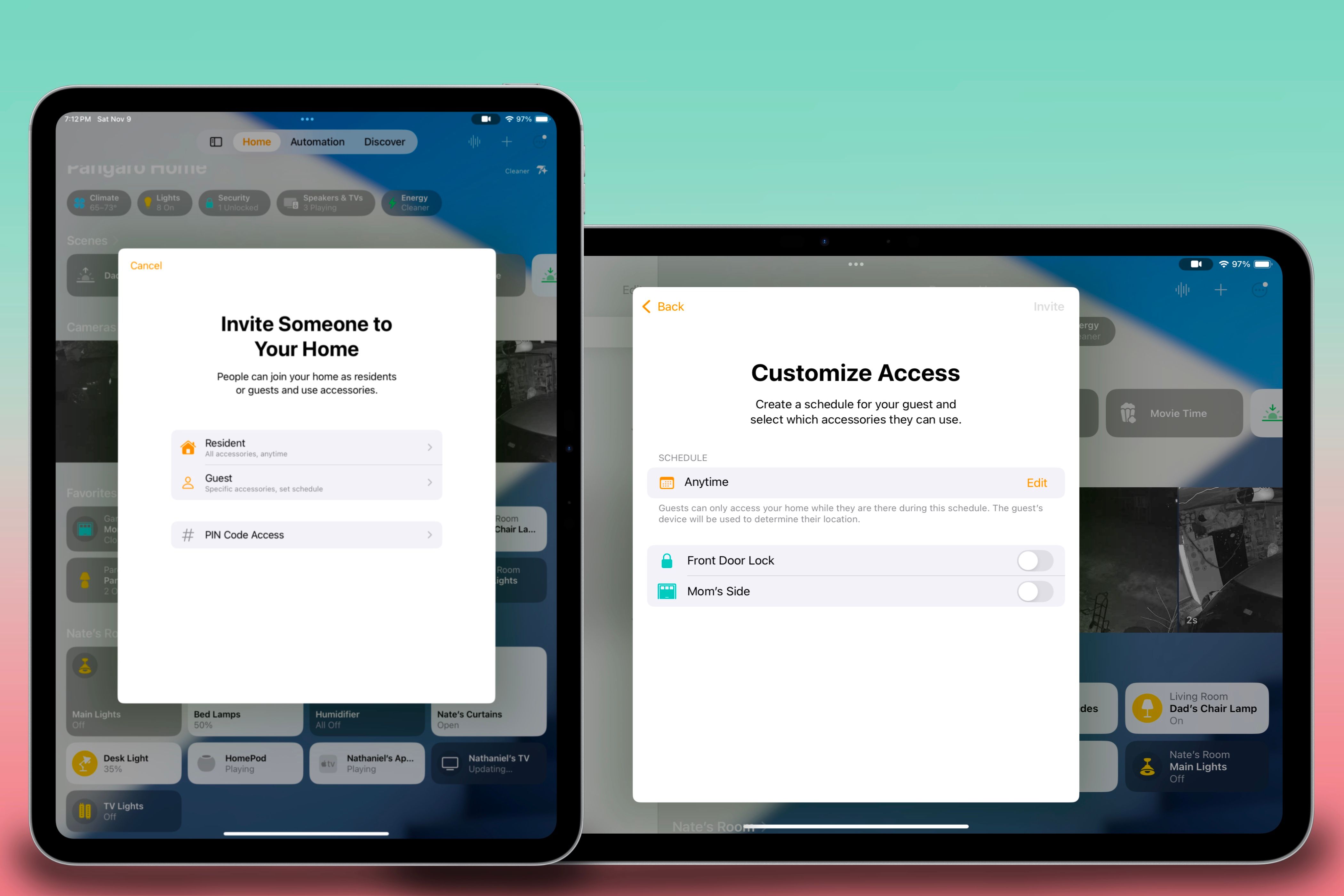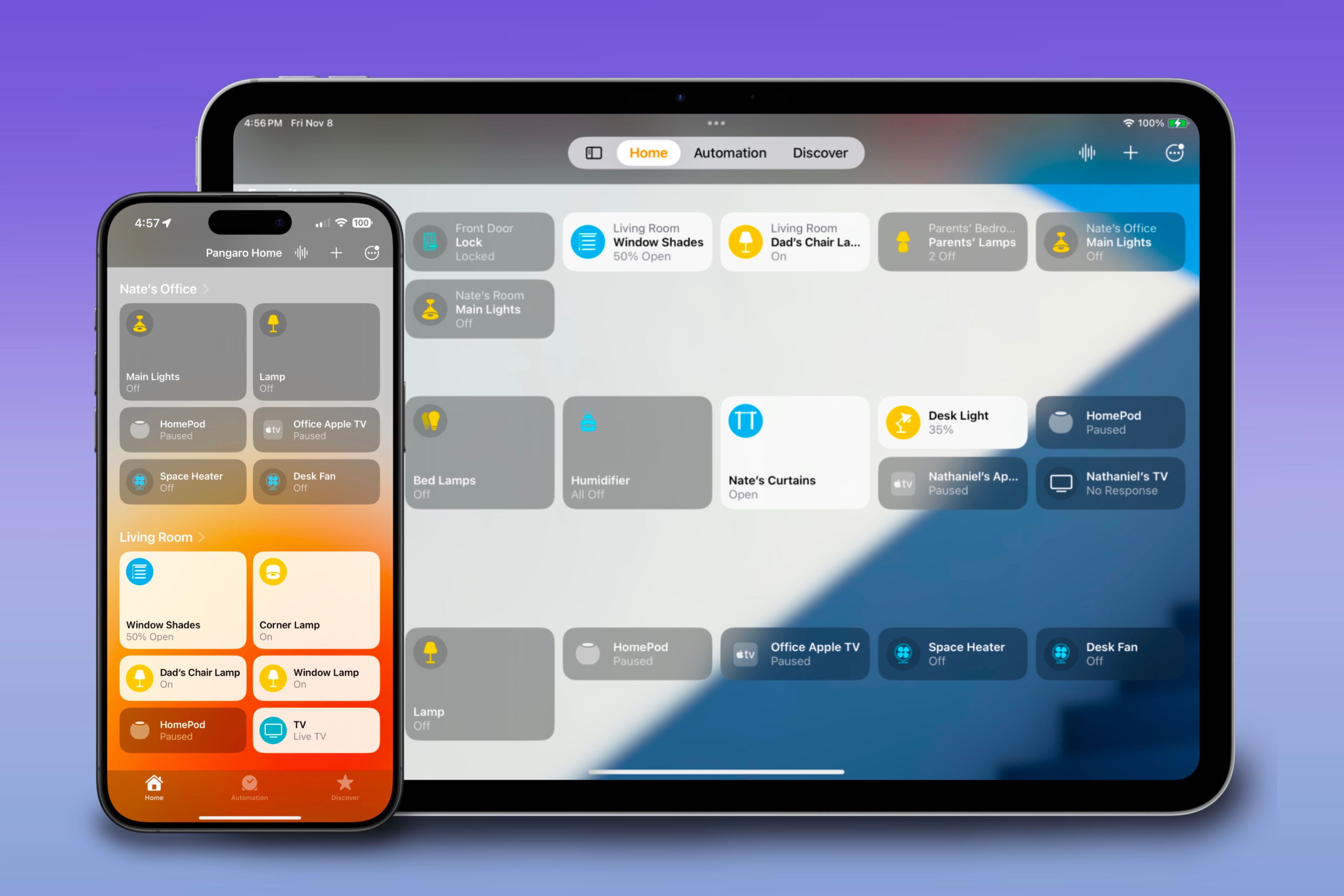Key Takeaways
- Smart home technology can help older adults perform tasks using voice commands and personal devices.
- Choosing the right smart home ecosystem (like Alexa, Google Home, or Apple HomeKit) is an important first step to ensure that your smart home works with existing devices.
- Do even more by planning automations to control devices based on the time of day and your location, so that many tasks become entirely automonmous.
Getting older can sometimes limit our ability to do basic tasks like turning on a lamp behind the couch or going down a flight of stairs to lock the door. Smart devices can make those tasks more accessible even to older adults with new limitations, so I put them to good use to help my parents.
Why Turn to Smart Home Technology?
From the catalog of smart devices, like plugs, light bulbs, light switches, and more, you can easily replace or upgrade appliances with smarter versions without drastically changing their use case. Because of this, even the least tech-savvy people can use these appliances without difficulty.
As someone who cares for their parents, I’ve turned to these devices to help them control different appliances in the house without further hassle. Furthermore, with my father being diagnosed with dementia, converting our home into a smart house has given us extra support when taking care of him.
Every smart home will be different, and depending on the house’s layout, you’ll find some devices more valuable than others. However, no matter what you choose, converting your parents’ home into a smart one can greatly help them perform the same tasks more efficiently.
First Choose the Right Ecosystem
Before buyiny any smart home devices, decide which ecosystem to join. Amazon Alexa, Google Home, or Apple HomeKit are the most popular options. All ecosystems are compatible with Android and iOS, minus HomeKit, which is solely for Apple devices.
If you’re having difficulty deciding, it’s usually best to consider the devices you already have. If you are primarily an Apple user—like my family is—with iPhones and iPads, then HomeKit would be the best fit. On the other hand, if you have a Pixel phone and tablet, Google Home may be the better option.
Styling Your Smart Home One Device at a Time
Once you’ve selected an ecosystem, it’s time to decide which smart devices you want to begin decorating your house with. These can range from smart plugs to garage door openers and light switches. Ensure any devices you select are compatible with your chosen ecosystem.
Fortunately, with the introduction of Matter, more devices will follow the new smart home standard and be compatible with all ecosystems, regardless of which one you’re part of.
While the plethora of devices can be overwhelming, I’ve found smart plugs to be your best friend because they require the least amount of work to install and offer a range of usability. With a smart plug, you can make nearly any ordinary device, from a lamp to a bug zapper, smart.
In our house, I plugged every lamp into a smart plug because they’re mainly located behind chairs and the couch, so reaching them is difficult. With the help of a smart plug, my parents can either say, “Siri, turn on the corner lamp,” or manually turn it on from the Home app.
This option eliminates the need to reach over the couch or chair to control the lamps manually, which could result in injury or worse.
Plugging these devices into smart plugs has also become helpful when caring for my father. Physically caring for him is no simple task, so controlling various devices with just our voice has allowed us to multitask while keeping our attention on him.
Smart devices don’t only have to be used indoors; there are outdoor options, too. By incorporating smart outdoor plugs into our home setup, I gave my mother the ability to control the outdoor decorations from her phone instead of doing so physically.
My mother loves decorating for the holidays with lights and inflatable characters. With the addition of an outdoor smart plug, she no longer needs to go outside to control them physically. This eliminates going outside to set the timer for when the decorations should turn on or unplugging them if the weather is getting bad.
Due to her being diagnosed with osteoporosis in her spine—and us living in a multiple-leveled house—stairs have become a challenge. Letting her control what happens outside via her voice or on her devices helps eliminate the need for her to go up and down the stairs.
Every smart device has different use cases, but including them makes essential devices more accessible and simplifies housekeeping without sacrificing independence due to limitations.
Planning Out Your Routines
Being able to control your devices manually is great, but setting up different automations unleashes the full potential of a smart home. Implementing them helps you control the appliances around your home more effectively without lifting a finger or saying a word.
I’ve set up a bunch of automations to go off depending on the time, the status of other devices, and my location. Setting them allows my household to function autonomously without needing to do anything during a particular time or event.
Most of the automations I’ve implemented pertain to the smart devices in our living room. My father usually sits there to watch television, and due to his condition, he can’t control the lights and shades throughout the day.
With the help of my set automation, the lights in the room will turn on, and the window shades will lower halfway when the sun sets. This will ensure that he isn’t sitting in darkness when the stars come out or seeing a glare from the sun on the television when it’s setting at a specific angle.
Furthermore, I’ve set up an automation to run in my parent’s bedroom, so the lights automatically turn on when we walk in. This happens because the door sensor senses a change in its status and automatically alerts the light switch to turn on.
We usually have both hands occupied when wheeling my father into the bedroom at night, so having this automation allows the room to illuminate when we walk in and not have us enter a dark void.
But the most essential automation I’ve set up is automatically locking the front door at night. This automation is helpful because it ensures the house remains secure—even when I’m not home.
Stemming from that, leaving your house may be nerve-racking because intruders may break in if they think the house is empty. So, by adding an automation to know my location, it’ll detect when I leave my house and automatically turn on specific lights to give the illusion that I’m home.
Automations hold more significant potential than initially perceived, and their inclusion can help older individuals who may forget to do specific tasks—like turning on the outside lights—or have limited accessibility.
Securing Your House Inside and Out
Safety is why I decided to turn my parents’ house into a smart home. I want to ensure that, in the case of an emergency, my parents have the proper tools to deal with it but can ultimately prevent it.
To start, I installed the Aqara G4 Doorbell because its camera, microphone, and speaker allow my mother to see who’s at the door and talk to them without physically answering it or even being home.
Additionally, I installed multiple cameras inside and outside our house so we could see what was happening right from our devices if we heard a noise.
However, we mainly use the cameras to ensure my father is doing well when we’re not in the same room. This includes ensuring he eats when we give him a meal or falls asleep after we put him to bed.
Security cameras also have built-in speakers and microphones, so you can have conversations through them, just like with smart doorbells. This allows us to update my father’s health aid when we’re not upstairs.
Installing these security devices helps me check in on my parents when I’m not home and ensure they are safe and doing well. All it takes is for me to open the Home app and check in; no additional actions are needed.
Controlling a Smart Home Is Easy
One of the biggest advantages of setting up a smart home is its easy navigation. Anyone can figure out how to use it because all it takes is to tap on the device you want to use.
When I began our smart home transition, I ensured my parents knew where each device was in the app and how to use it. I also ensured they knew what to say to Siri to control a device or run a Scene, making it easy for them to control multiple devices simultaneously throughout the day.
The best part about smart devices is that they build upon the functionality of their original use without diminishing it. For instance, if you install a smart switch, you can still press it to turn your lights on and off without going through an app.
No matter who you’re setting up a smart home for—whether yourself or your older parents—it’s essential to ensure everyone understands how to control and use each device before completely converting.
Sharing is Caring… if You Want To
Smart homes are primarily supposed to be accessible by the residents, but others may also need access in some circumstances. However, getting permission from everyone living there is crucial before sharing access to the home.
Access to control your smart home should only be done with people you trust. Permitting them is like giving them a key to your home. I shared access with my sister, who had previously moved out. There was ultimately no question about giving her access, but I still told my parents about it since it allowed her to control the devices in our house.
In iOS 18, HomeKit allows you to permit guests access to your home’s security devices, such as your garage door and door locks.
We utilize this feature with my father’s health aid by giving her access to our garage door opener, which allows her to let herself in without us having to open it when she arrives and close it when she leaves.
However, if you change your mind about granting someone permission, you can always revoke their access at any time.
Benefiting From Living in a Smart Home
Smart homes are no longer for the tech nerds who live and breathe the latest releases. They’re now a way to help people of all ages, especially those with mobility limitations, operate the devices in their homes more intuitively.
Regardless of which ecosystem you choose, the underlying usage of all of them is the same. And with the rise of Matter’s smart home standard, more accessories will work cross-ecosystem.
Starting with a smart home may seem overwhelming, but once you begin including devices in your home and start using them, you’ll wonder how you ever lived without them.



